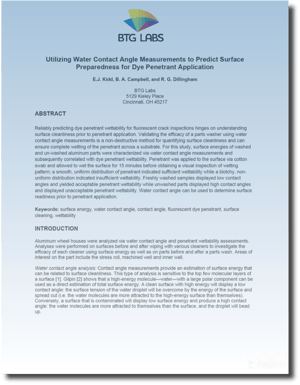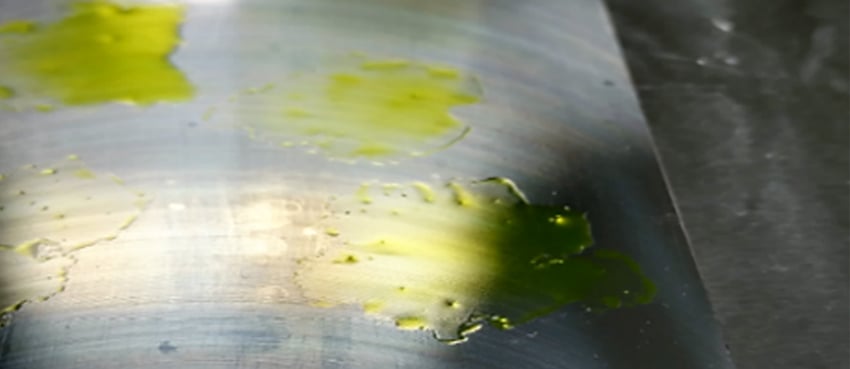Reliably predicting dye penetrant wettability for fluorescent crack inspections hinges on understanding surface cleanliness prior to penetrant application.
Validating the efficacy of a parts washer using water contact angle measurements is a non-destructive method for quantifying surface cleanliness and can ensure complete wetting of the penetrant across a substrate.
Premise: Surface energies of washed and un-washed aluminum parts were characterized via water contact angle measurements and subsequently correlated with dye penetrant wettability.
 Penetrant was applied to the surface via cotton swab and allowed to wet the surface for 15 minutes before obtaining a visual inspection of the wetting pattern; a smooth, uniform distribution of penetrant indicated sufficient wettability, while a blotchy, non-uniform distribution indicated insufficient wettability.
Penetrant was applied to the surface via cotton swab and allowed to wet the surface for 15 minutes before obtaining a visual inspection of the wetting pattern; a smooth, uniform distribution of penetrant indicated sufficient wettability, while a blotchy, non-uniform distribution indicated insufficient wettability.
Freshly washed samples displayed low contact angles and yielded acceptable penetrant wettability, while unwashed parts displayed high contact angles and displayed unacceptable penetrant wettability. The water contact angle can be used to determine surface readiness prior to penetrant application.
Download to read the full paper: Utilizing Water Contact Angle Measurements to Predict Surface Preparedness for Dye Penetrant Application

